| WARTIME BICYCLES |

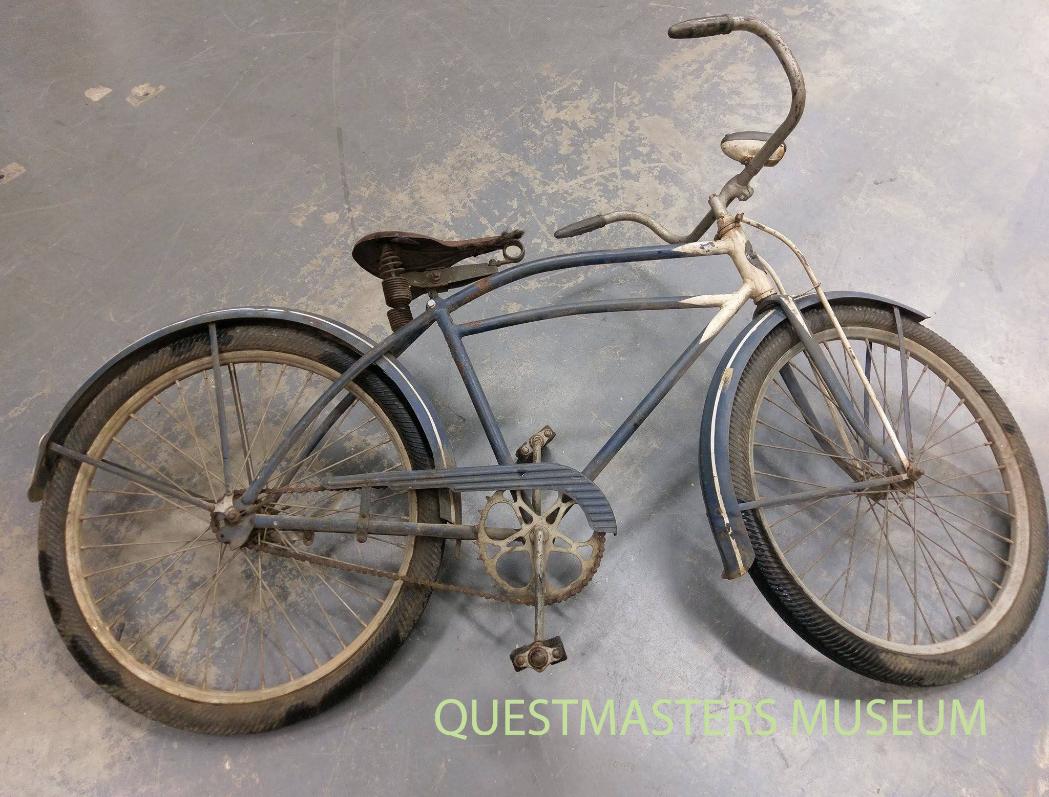
| U.S. Army 1943 G519 Columbia Model MG Bicycle, Serial Number 141762, above photo. This bicycle is shown in unrestored condition with post-WWII blue paint. The G519 was originally painted olive drab from the factory and is visible under the blue paint on this bicycle. The 1942 and early 1943 Columbia and Huffman bicycle is easily identified by the curved front frame tube, which was the same as the civilian model. In 1943, the front frame tube was changed to a straight tube. The serial number for all G519 bicycles is located on the bottom of the frame tube that supports the pedals. The tires on this bicycle are post-WWII production. This bicycle has the original wooden pedals and olive green torpedo shaped grips. It is missing the kick stand, battery operated fender lamp and the handlebar bell. The horn mounted on the handlebars is post-WWII. |

| During the early 20th century, the bicycle was the easiest and most cost effective vehicle the military could purchase. In 1942, a contract was awarded to two bicycle manufacturers to produce the Government Model 519, or G519 Bicycle, to be used by all three branches of the United States Military. The contract was awarded to Westfield Columbia, Massachusetts and Dayton Huffman, Ohio. The G519 was the only military vehicle produced that was gender specific - there was a different version produced for men and women. Civilian bicycle production continued during WWII for all other manufacturers. |
| U.S. Army 1943 G519 Huffman Model MG Bicycle, Serial Number H126040, above photo. This bicycle was obtained by QuestMasters in restored condition, but it will be re-restored as many details were not done correctly. The 1942 and early 1943 Columbia and Huffman bicycle is easily identified by the curved front frame tube, which was the same as the civilian model. In 1943, the front frame tube was changed to a straight tube. The serial number for all G519 bicycles is located on the bottom of the frame tube that supports the pedals. The tires, seat, pedals and grips on this bicycle are post-WWII. |
| U.S. Army 1945 Columbia Model F-92L Bicycle, Serial Number G198692, above photo. The Columbia Compax Sports Traveler was a take-apart bicycle that first started production in 1939. The bicycle could be separated into two sections by a sleeve in the center of the frame, allowing it to be easily transported. During WWII this bicycle was produced for the United States Military as the F-92H (Heavy, balloon tires) and F-92L (Lightweight tires). This bicycle was restored by QuestMasters in 2013. The F-92H and F-92L are best affiliated as being used by Airborne Paratroopers, but no documentation has been found that shows them being deployed in combat, although they were used in non-combat roles on and around bases. After WWII, the Columbia Compax Sports Traveler was marketed with the name and head badge logo “Compax Paratrooper”. |
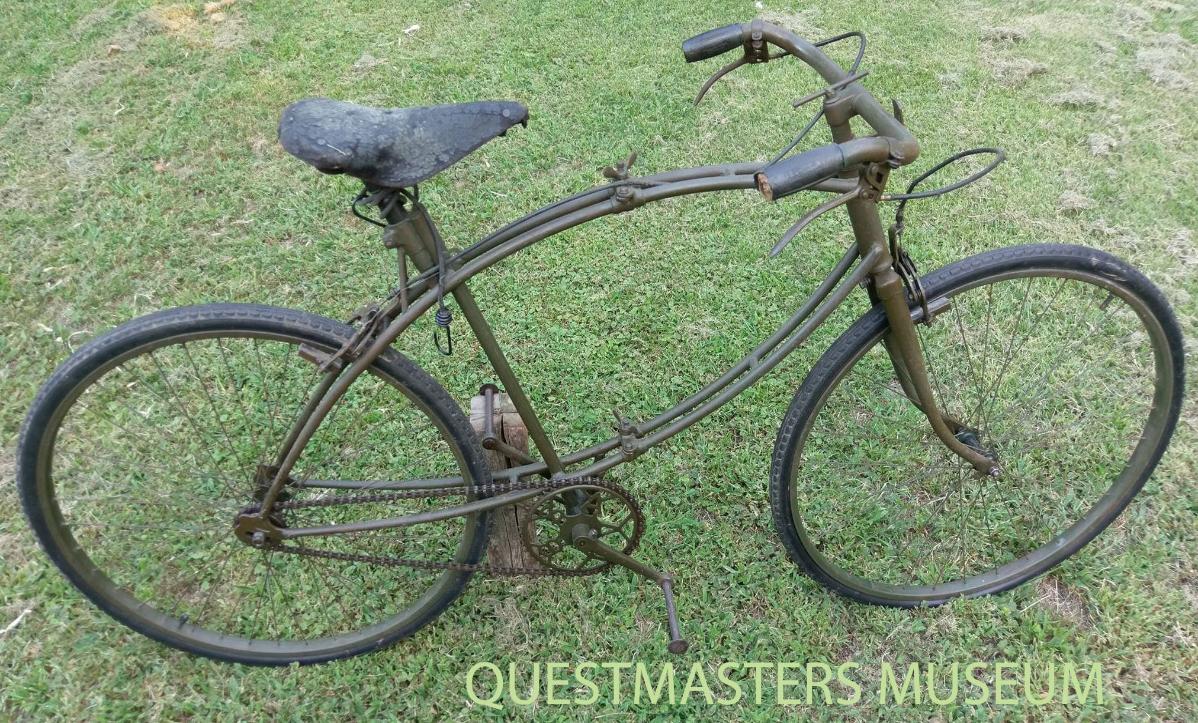
| British 1942 BSA Paratrooper Bicycle, Serial Number R3641, above photo. The Birmingham Small Arms Company was contracted by British Government during WWII to produce a folding bicycle for the Army for use by paratroopers. Shown here is the very early first model BSA Paratroop Bicycle. The first model is identifiable by the twin tubes that support the seat. The second model had only one tube that supported the seat. This bicycle 100% original with WWII paint, tires, grips and seat. |

| G519 Bicycle Tool Bag, above photo. The G519 Bicycle made by Columbia and Huffman was supplied with a leather and pressed steel tool bag. The steel parts were painted olive drab. The tool bag was mounted below the rear of the seat. The only manufacturer of the G519 Tool Bag was The Persons Company, Worchester Massachusetts. |
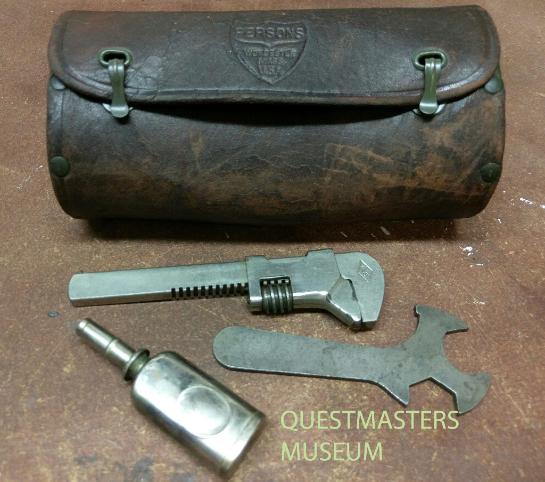
| G519 Bicycle Tools, above photo. The G519 Bicycle tool bag contained tools to service and adjust the parts of the bicycle. This U.S. Army marked wrench was manufactured by FL Manufacturing Company, Newark NJ. |


| G519 Bicycle Grips, above left photo. The early contract G519 bicycle was delivered with black rubber civilian style Coke Bottle shaped grips. Because rubber was a valuable material in war production, the G519 bicycle was later delivered with olive green plastic torpedo shaped grips. The examples here are New Old Stock directly from the wartime packaging. G519 Bicycle Pedals, above right photo. The pedals on the G519 bicycle were produced by Torrington. The examples shown here have rubber blocks used in early production. War production shortage in rubber forced the rubber to be replaced with wooden blocks. |
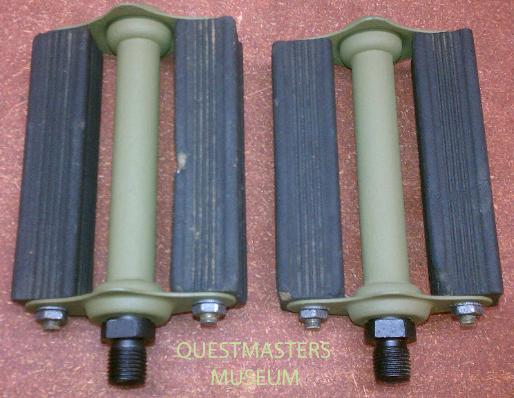
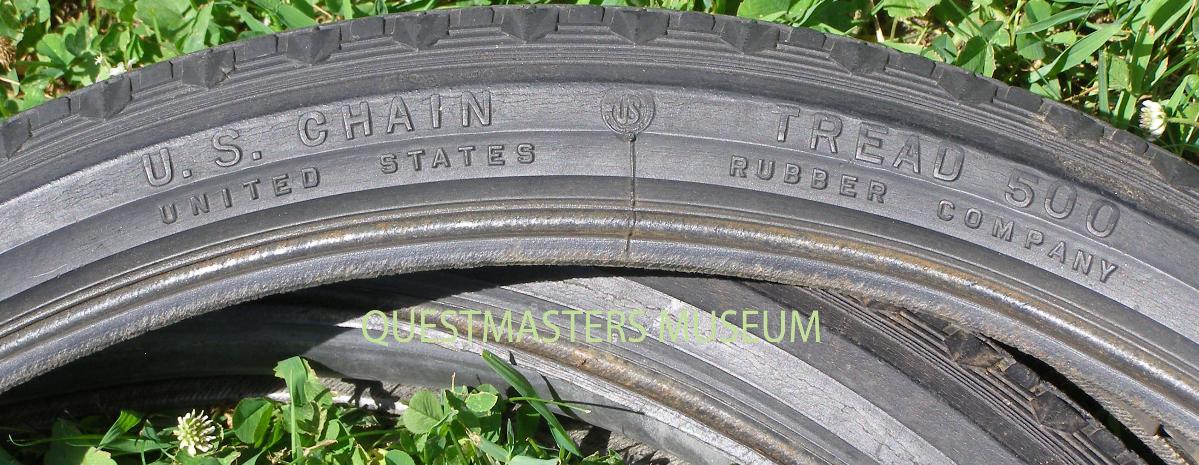
| G519 Bicycle Tires, above two photos. The tires shown here are original WWII produced tires by U.S. Chain, Tread 500, United States Rubber Company, size 26 x 2.125 (known as balloon tires). WWII produced tires normally carry the marking: WAR TIRE. |
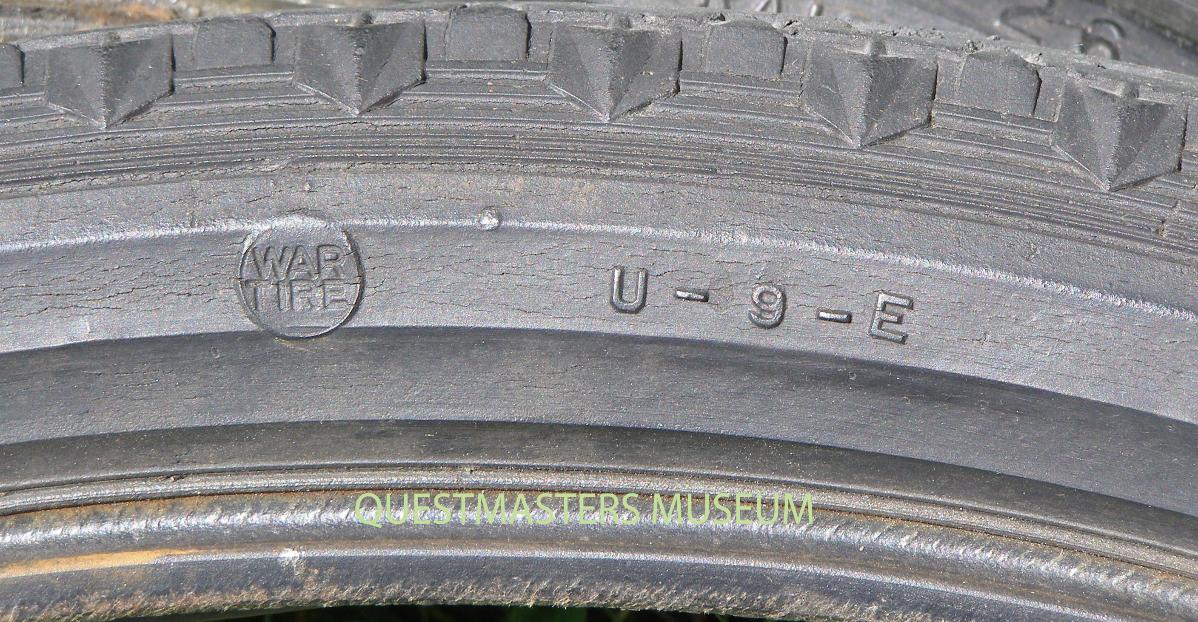

| G519 Bicycle Tires, above two photos. The tires shown here are original WWII produced tires by ALLSTATE CRUSADER, size 26 x 2.125 (known as balloon tires). WWII produced tires normally carry the marking: WAR TIRE. These tires would have been fitted to a WWII civilian produced bicycle, but could have been used as a replacement tire on a military produced G519 bicycle. |

| Dayton Huffman Victory Model Bicycle SN H134509, above photo. This wartime produced Dayton Huffman, of Ohio, Victory Model Bicycle was found by QuestMasters in 2019. The bicycle has been repainted at least twice since World War Two. The original color was blue and then it was painted green and lastly red, as shown here. It is missing the rear fender. It retains its wartime wooden pedals and white torpedo grips. The Huffman Serial Number H134509, stamped on the bottom of the frame, is believed to have been made in 1943. In December 1941, the Office of Production Management and leading manufacturers developed specifications for a simplified bicycle dubbed the "Victory bicycle" by government and media. OPM reviewed several prototypes submitted for examination. Regulations finalized in March 1942 specified that bicycles would be lightweight - not more than 31 pounds, about two-thirds the weight of prewar bicycles - and they would be made of steel only, with no copper or nickel parts. Chrome plating was limited to a few small pieces of hardware. Handlebars and wheel rims would be painted instead of chrome plated, and most accessories (chain guard, basket, luggage rack, bell, whitewall tires) were eliminated. Tire size was limited to a width of 1.375 inches, narrower than balloon tires on prewar children's bikes. Production was set at 750,000 Victory bicycles per year by twelve manufacturers, approximately 40 percent of total prewar production but a significant increase in annual production of adult bicycles. The manufacture of all other types of civilian bicycles was halted. By July 1942 the Office of Price Administration estimated that 150,000 Victory bicycles and 90,000 prewar bikes were available for retail sale. OPA rationed new and prewar men's and women's bicycles. Any adult who was gainfully employed or contributed in some way to the war effort or public welfare could purchase a bicycle if she or he could cite a compelling reason, such as inadequate public transportation, excessive walking, or responsibility for a delivery service. In August 1942 eligibility was further restricted to persons in critical occupations, including physicians, nurses, druggists, ministers, school teachers, mail carriers, firefighters, police officers, construction workers, delivery personnel, public safety officers, and others. By the summer of 1942, American Bicyclist and Motorcyclist reported that thousands of war production workers were riding bicycles to their jobs, and new and used bikes were in great demand. Some companies owned fleets of bicycles for work-related uses such as reading electric meters. In keeping with a War Production Board order, there is no nameplate or other brand identification other than the letter "H" (for Huffman) stamped on the bottom of the crankcase beside the serial number. In September 1942 the number of authorized Victory bicycle manufacturers was reduced from twelve to two, Westfield Columbia as the Woman's Model VG 296 and Dayton Huffman. |

